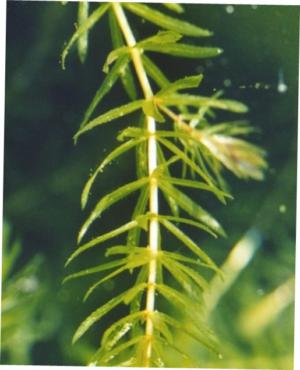Hydrilla asiatica
(Hydrilla asiatica)

Description
Hydrilla (Esthwaite Waterweed, waterthyme or hydrilla) is a genus of aquatic plant, usually treated as containing just one species, Hydrilla verticillata, though some botanists divide it into several species. It is native to the cool and warm waters of the Old World in Asia, Europe, Africa and Australia, with a sparse, scattered distribution; in Europe, it is reported from Ireland, Great Britain, Germany, and the Baltic States, and in Australia from Northern Territory, Queensland, and New South Wales.The stems grow up to 1-2 m long. The leaves are arranged in whorls of two to eight around the stem, each leaf 5-20 mm long and 0.7-2 mm broad, with serrations or small spines along the leaf margins; the leaf midrib is often reddish when fresh. It is monoecious (sometimes dioecious), with male and female flowers produced separately on a single plant; the flowers are small, with three sepals and three petals, the petals 3-5 mm long, transparent with red streaks. It reproduces primarily vegetatively by fragmentation and by rhizomes and turions (overwintering), and flowers are rarely seen.They have air spaces to keep them upright.Hydrilla has a high resistance to salinity compared to many other freshwater associated aquatic plants.
Taxonomic tree:







